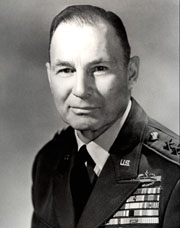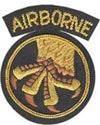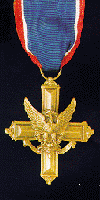 WARPATH
WARPATHBy Roy Cook: American Indian Warriors Association - SFA-75
November is Native American Indian Heritage Month. November 11, 2010 is Veterans Day, a National holiday. The day before, November 10 is the USMC birthday. Throw in Thanksgiving Day and regional holidays of historical recognition and it makes for a busy start to the Holiday season. Every day is a good day to remember our veterans. Take pride in honoring the achievements of this American Indian Military Veteran!
Tokaha Waste Wicasha, Lloyd Roosevelt Moses
Major General, US Army
By Roy Cook
Tokaha Waste Wicasha, Lloyd Roosevelt Moses, was born on the Rosebud Reservation, September 4, 1904 to James H. Moses and Alice O. Shelden in Fairfax, South Dakota. Alice Shelden was of Lakota Sioux heritage.
From Moses humble beginnings at White Thunder Indian Day School in Mellette County and Colome High School, in Colome, South Dakota through two wars and a subsequent second career as the Director of the Institute for American Indian Studies at USD. Lloyd R. Moses left his mark on South Dakota and the USD ROTC program.
 In
Colome, South Dakota. From 1925-1927, Moses was a rural schoolteacher
for the Rosebud School District and later he was the Deputy County Superintendent
of Schools. He then studied Chemistry at the University of South Dakota
from 1927-1931. He was a member of the USD ROTC and received a commission
of Lieutenant in the Army Reserve in 1931. It was also at USD where he
met his wife, Ruth West. They were married on February 14, 1935.
In
Colome, South Dakota. From 1925-1927, Moses was a rural schoolteacher
for the Rosebud School District and later he was the Deputy County Superintendent
of Schools. He then studied Chemistry at the University of South Dakota
from 1927-1931. He was a member of the USD ROTC and received a commission
of Lieutenant in the Army Reserve in 1931. It was also at USD where he
met his wife, Ruth West. They were married on February 14, 1935.
 In
1932, Moses was employed as an instructor of Chemistry at Sioux Falls
College and worked for the Witte Paint and Chemical Company. Moses served
in the Army Reserves until 1940. One of his tours of duty included working
with the Civilian Conservation Corps (CCC) in Breckenridge, Minnesota.
In 1940, he was called into active duty. Moses trained soldiers in Missouri
and Alabama until 1945 when he was sent to Europe to serve with the 507th
Parachute Regiment.
In
1932, Moses was employed as an instructor of Chemistry at Sioux Falls
College and worked for the Witte Paint and Chemical Company. Moses served
in the Army Reserves until 1940. One of his tours of duty included working
with the Civilian Conservation Corps (CCC) in Breckenridge, Minnesota.
In 1940, he was called into active duty. Moses trained soldiers in Missouri
and Alabama until 1945 when he was sent to Europe to serve with the 507th
Parachute Regiment.
He worked on the European theater staff and was included in the airborne assault over the Rhine. Operation Varsity, the airborne phase of Plunder, would include the British 6th Airborne Division 'Red Devils,' and the U.S. 17th Airborne Division 'Thunder From Heaven,' in the largest airborne drop made in a single day.

At the end
of World War II (1939-1945), he became post commander at Sendai, Japan.
Moses was once more in combat while commanding the 31st Infantry Regiment during the Korean War (1950-1953). Unlike most Regular Army Infantry Regiments, the 31st Infantry has not had an enduring historical affiliation with a "parent" division. It instead served many masters. Until 1957, it was the only regiment in the Army to have never served in the Continental US, earning it the unofficial nickname " America 's Foreign Legion".
In October 1952, the U.S. 7th Infantry Division occupied a sector of the Main Line of Resistance (MLR) in central Korea near Kumhwa. Opposing the division, the Chinese 45th Division held elevations to the north, including Hill 598, also called Triangle Hill. Both sides were well dug-in. Battle lines had not changed significantly in almost a year.
After peace talks began in November 1951, the Eighth Army assumed an "active defense" posture and combatants on both sides marked time awaiting the outcome of the talks.
The "War of the Hills" had begun. For six months, this war played out as artillery/mortar exchanges and minor skirmishes that did little to change the situation. Then, in spring 1952, as frustration over the failure of peace talks increased, "active" defense gave way to active engagement. Operation Showdown began to take shape.
 Col.
Lloyd Moses, commander of the 7th Division's 31st Infantry Regiment received
the Distinguished Service Cross for his leadership at Triangle hill, in
Korea. The DSC is second only to the Metal of Honor for courage in combat.
Col.
Lloyd Moses, commander of the 7th Division's 31st Infantry Regiment received
the Distinguished Service Cross for his leadership at Triangle hill, in
Korea. The DSC is second only to the Metal of Honor for courage in combat.
He served again in Japan from 1953-1954 and then returned to the United States to serve at Fort Leavenworth and Fort Dix.
In 1957, he was assigned to the Southern Area Command in Munich, Germany. Moses commanded the 8th Infantry Division from 1959-1960 and U.S. Fifth Army (1960-1964). He retired from the Army as a Major General in 1964 and settled in Vermillion, South Dakota.
After retirement, Moses served as the director of Institute of Indian Studies (the current Institute for American Indian Studies) at the University of South Dakota from 1967-1974. He was instrumental in developing Indian related Courses at USD and overhauling the direction and purpose of the Institute. Moses was active with the South Dakota State and the Clay County Historical Societies. He was an avid sportsman, writer and historian. He was also involved with publishing several books including his autobiography: What ever it Takes and Who’s Who Among the Sioux.
Moses was a member of the Rosebud Sioux Tribe and he was given the Indian name of Tokaha Waste Wicasha (good leader).
Moses died on August 22, 2000. Moses and his wife are buried in Arlington National Cemetery, Washington, D.C.
MOSES, LLOYD R
MAJ GEN US ARMY
VETERAN SERVICE DATES: 01/01/1935 - 09/30/1964
DATE OF BIRTH: 09/30/1904
DATE OF DEATH: 08/27/2000
DATE OF INTERMENT: 09/12/2000
BURIED AT: SECTION 68 SITE 2811
ARLINGTON NATIONAL CEMETERY